Estimated reading time 15 minutes, 25 seconds.
Since the second half of 2020, there has been a pronounced increase in business aviation activity. As the global pandemic reduced commercial airline operations, travelers recognized the convenience, comfort, and peace of mind associated with private aircraft.
Much has been discussed about the increased flight activity, the significant orders for new aircraft from both traditional and first-time buyers, as well as the reduction in the number of aircraft available in the previously-owned market. While a great deal of attention has been focused on mid-size and large-cabin corporate jet models, is the same phenomenon occurring with smaller, yet just as important, business aircraft?
To answer that question, Skies approached the eight OEMs currently producing pressurized turbine powered aircraft priced within the US$2 million to $6 million range.
Cirrus Aircraft – Duluth, Minnesota
The first conforming Cirrus Vision SF50 very light jet prototype made its inaugural flight on March 24, 2014, receiving its FAA certification years later on Oct. 28, 2016. Since then, more than 350 of the distinctive V-tailed aircraft have been produced.
The latest variant is the SF50 G2+ Vision Jet. According to Nadia Haidar, Cirrus Aircraft’s public relations manager, there is strong demand for the model.
“Currently, 400 G2+ Vision Jet production positions are reserved,” she noted. That represents more than three years of production.
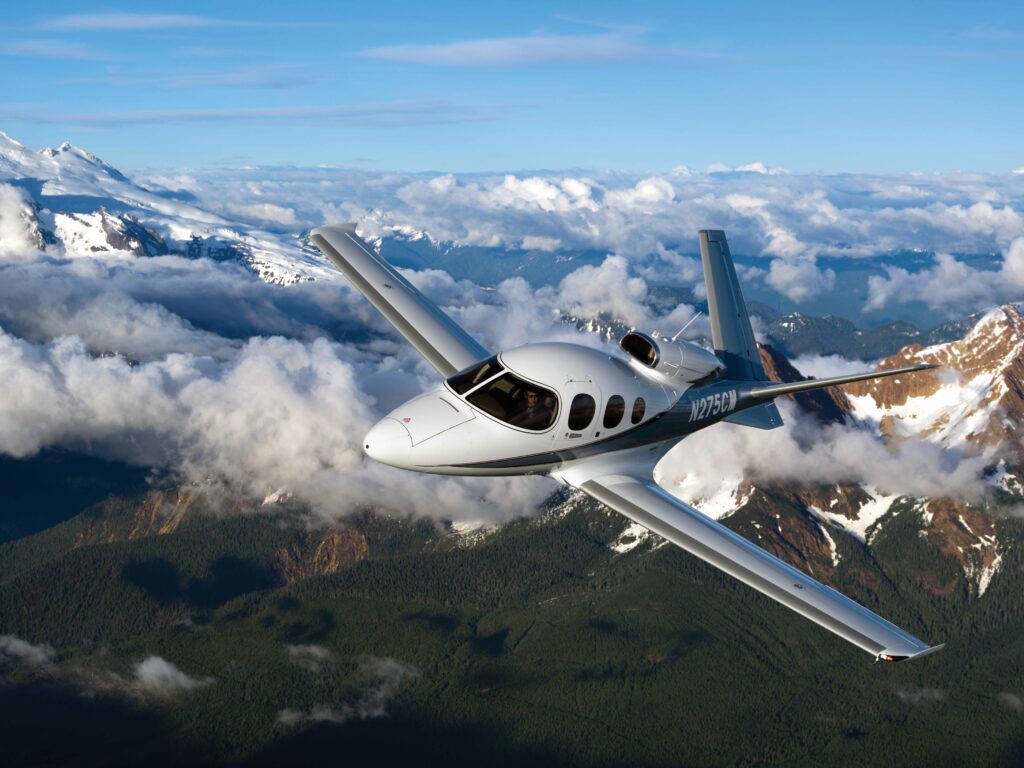
During 2021, 86 Vision Jets were delivered and more than 90 are expected to be shipped in 2022. Could this level of demand result in a higher annual output? “Absolutely,” said Haidar. “As demand continues to increase, Cirrus Aircraft expands its operations to meet production needs.”
She noted that the company had recently increased its paint and finish facility’s capacity at Duluth by 35 percent.
As for the types of buyers who are going after this distinctive single-engine jet, Haidar told Skies that first-time aircraft buyers represent 16 percent of unit sales. Moreover, 76 percent of SF50 purchasers previously flew their own Cirrus SR series piston aircraft before stepping up to the new jet.
The base price of a new G2+ Vision Jet is approximately US$3.25 million, but available options can result in a price that is closer to US$4 million.
Daher – Tarbes, France
The prototype TBM 700 — originally a collaborative effort between Socata of Tarbes and Mooney of Kerrville, Texas — first flew on July 14, 1988. The “TB” stands for Tarbes, and “M” is for Mooney. After Mooney withdrew from the venture in May 1991, Socata developed a successful series of TBM models. Daher, a French industrial conglomerate, purchased Socata on Jan. 7, 2009. To date, more than 1,100 TBMs have been built.
Daher currently offers the TBM 910 at about US$4.5 million and the TBM 960 at approximately US$5 million. Nicolas Chabbert, senior VP of Daher’s Aircraft Division, told Skies that there is a very high level of interest in both models.
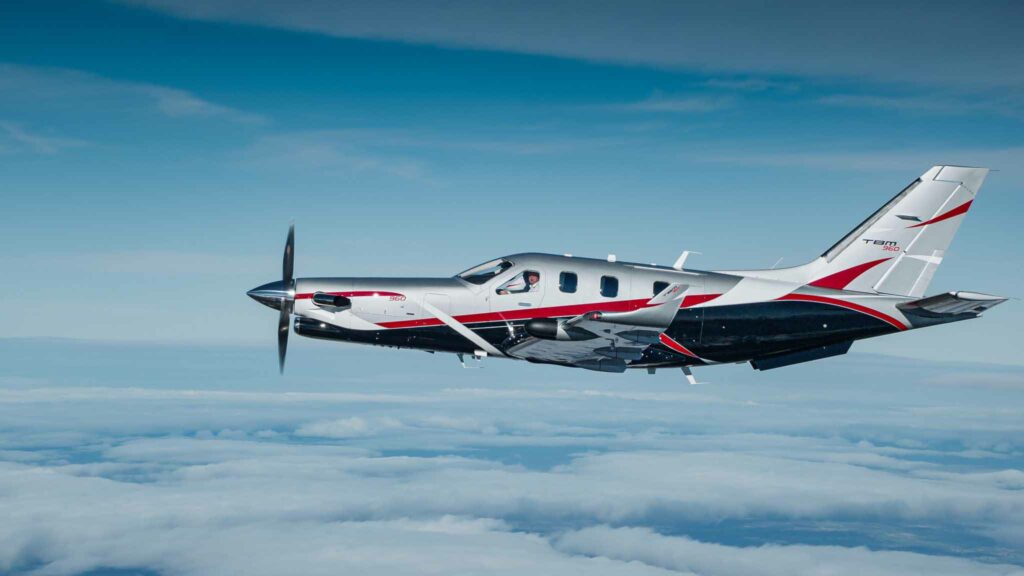
“The sales are clearly led by the TBM 960, which is the newest high-end version,” he said.
The TBM order backlog now stretches out 18 months. Chabbert shared that the OEM expects to “produce 60 TBM 960s in 2022 and an equivalent number of TBMs in 2023.” Given that 51 were produced during 2021, that number is impressive.
He noted that there are two typical TBM buyers: those upgrading from high-performance, single-engine, piston powered aircraft; and repeat TBM customers. Brand loyalty has been strong, “with many owners now on their second, third, fourth, fifth, or even sixth TBM as they have progressed from the TBM 700 to the TBM 960,” said Chabbert. As well, approximately 80 percent of TBMs are owner-flown.
Embraer – Melbourne, Florida
Having been very successful with regional jet airliners, the Brazilian airframer targeted the corporate jet market in April 2005. Its first model was the EMB-500 Phenom 100. The prototype first flew on July 26, 2007, and it received its type certificate on Dec. 8, 2008. Since then, almost 400 of the attractive very light jets (VLJs) have been delivered.
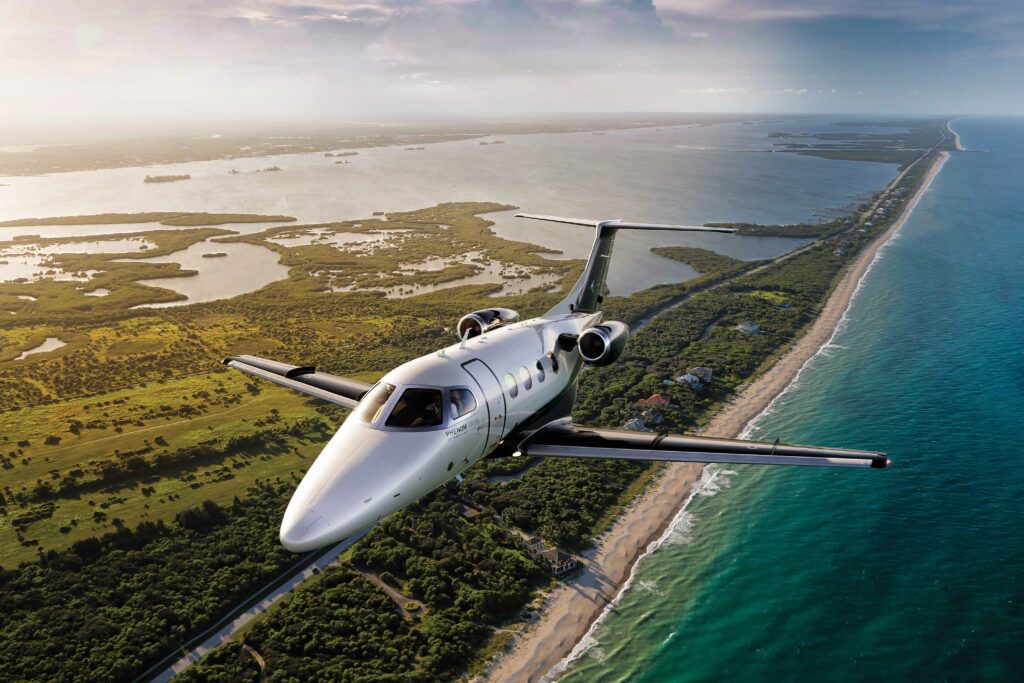
The EMB-500’s annual production rate peaked at 100 units in 2010 and has been slowing down ever since. During the past 7.5 years, 77 units have been shipped — including only 15 during the past 30 months.
The current variant of the model is the Phenom 100EV. Priced at approximately US$4.5 million, it appears to be an attractive competitor in the VLJ niche. Given the success of Embraer’s larger Phenom, Legacy, and Praetor executive jets, it will be interesting to monitor the EMB-500’s future.
Epic Aircraft – Bend, Oregon
Epic Aircraft was founded in 2004 as a producer of a kit-built, single-engine turboprop named Epic LT. After being financially restructured, the company concentrated on manufacturing an upgraded variant of the LT.
Its first production model, the E1000, first flew on Dec. 19, 2015, and received its FAA certification on Nov. 6, 2019. Its P&WC PT6A-67A engine’s 1,200 shaft horsepower enabled the six-seater to cruise up to 333 knots and operate up to FL340. Epic’s current model, the E1000 GX, was certified on July 15, 2021. It features the Garmin G1000 NXi avionics suite and the Garmin GFC700 automated flight control system. It is priced at US$4.19 million.

According to Mike Schrader, Epic’s sales director, interest in the E1000 GX is “really strong!” He said that the order backlog is out to mid-2023. Epic is looking to produce 18 units during 2022 and 24 in 2023.
Honda Aircraft – Greensboro, North Carolina
Since the HA-420 HondaJet received its FAA certification on Dec. 8, 2015, approximately 220 have been delivered. The current offering, the HondaJet Elite S, has a base price of US$5.75 million. With available options, the price can top US$6 million.
Kie Nagasawa, Honda Aircraft’s head of corporate communications, told Skies, “We continue to receive high demand from a diverse customer base, including owner-operators, small- to mid-size business owners, and corporate operators.” She pointed out that “about 20 percent of HondaJet customers are first-time business jet owners.” As well, close to a quarter of the buyers fly the aircraft themselves.
Two fractional ownership programs have based their fleets on the HA-420. According to the latest FAA Reduced Vertical Separation Minimum approvals list, Jet It has 17 and FlyDreams (doing business as Volato) operates seven.
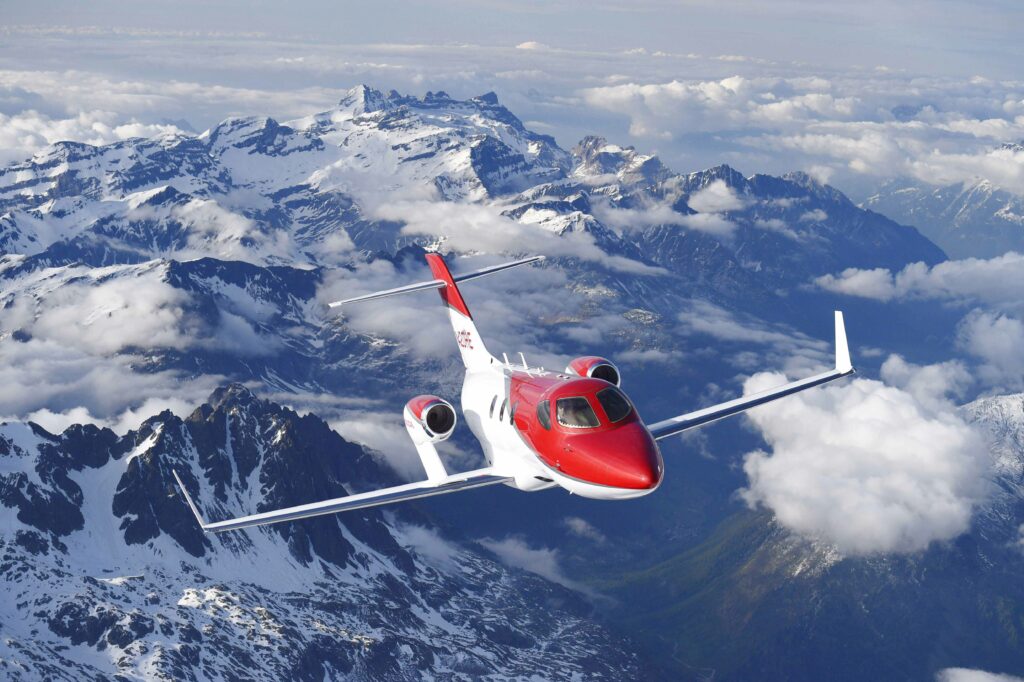
The strong order flow has taken the backlog out over two years. Nagasawa said, “Due to the global supply chain challenges, we are experiencing some impact on our production.” She noted that the company is working to navigate those challenges in order to “meet each customer’s needs.”
Pilatus – Stans, Switzerland
The prototype PC-12 first flew on May 31, 1991, and was certified by the FAA on July 15, 1994. By mid-2022, approximately 1,900 examples had been delivered. The latest variant is branded as the PC-12 NGX.
Tom Aniello, VP of marketing at Pilatus Business Aircraft in Broomfield, Colorado, told Skies that there has been “an extraordinarily high level of demand” for the PC-12 NGX.
The airframer’s manufacturing philosophy is to build slightly less than what is demanded each year. That enables Pilatus to avoid large production cycle fluctuations and maintain healthy residual values for aircraft in service.
“Someone wanting a new PC-12 NGX may have to wait two to three years to receive one designed to their own specifications,” said Aniello.
The combination of strong demand and restrained output has resulted in a tight secondary market. According to Aniello, “The effect has been that near-new aircraft are actually commanding a higher price than new aircraft.” That is impressive, given that a typically equipped PC-12 NGX retails for approximately US$5.7 million.

The type has had an illustrious career within Canada, where there are currently just over 100 operating. Stan Kuliavas, VP of sales at Levaero Aviation in Toronto, told Skies that the Canadian pre-owned market is tight.
“We are still experiencing record low PC-12 inventory numbers, hovering in the one percent to two percent range of the total in-service fleet.” He noted that during the past two years, there has been “a substantial influx” of first-time corporate aircraft buyers. The majority of new PC-12 buyers have been upgrading from smaller aircraft, split evenly between piston and turbine-powered types.
Piper Aircraft – Vero Beach, Florida
In 1997, after 14 years of success with its PA-46 Malibu pressurized six-seat single piston-powered model, Piper launched a turboprop variant. The PA-46-500TP Malibu Meridian was certified by the FAA on Sept. 27, 2000. In 2015, it was updated with a Garmin G1000 avionics system and renamed the M500. The more powerful M600 was certified on June 17, 2016. Today, Piper offers the M500 and the M600/SLS. The latter comes equipped with the Garmin Autoland system that can take complete control of an airborne aircraft if the pilot is unable to perform.
During the past four-and-a-half years, 209 of these turboprop PA-46s have been delivered. About three-quarters of those have been M600s. To learn how they are faring today, Skies spoke with Ron Gunnarson, Piper’s VP of sales, marketing, and customer support.

He noted that interest in the two models “continues to be robust, with zero worldwide dealer inventory.” The US$2.3 million M500’s order book is sold out until late 2023, and the US$3.5 million M600/SLS has a handful of available slots in 2023.
Might the rate of unit production increase? Gunnarson said as the manufacturer continues “to emerge from the pandemic and manage through supply chain challenges, we anticipate the combined production of the M500 and M600/SLS will increase in 2023.”
Brand loyalty has been important, as nearly two-thirds of M500/M600 buyers have previously owned a Piper aircraft. Furthermore, about 80 percent of the models are being delivered to pilot owners.
Textron Aviation – Independence, Kansas
Three decades ago, Cessna Aircraft entered the burgeoning VLJ market with its 525 CitationJet. The prototype first flew on April 29, 1991. Since it was certified on Oct. 16, 1992, approximately 990 model 525s have been produced. This impressive number includes 359 CitationJets, 199 CJ1s, 102 CJ1+s, and approximately 330 M2s.
The current variant of the 525 is the Citation M2 Gen2. Its base price is US$5.855 million — at the upper end of the price range we are reviewing.
Lannie O’Bannion, Textron Aviation’s senior VP of global sales and flight operations, is clearly proud of the Citation family’s smallest member. He told Skies, “We redefined the entry-level light jet segment when we brought the Cessna Citation M2 to the market in 2013. Now, with the integration of next-generation technology and design, we know the M2 Gen2 will continue to be among the most popular models in the light jet category.”
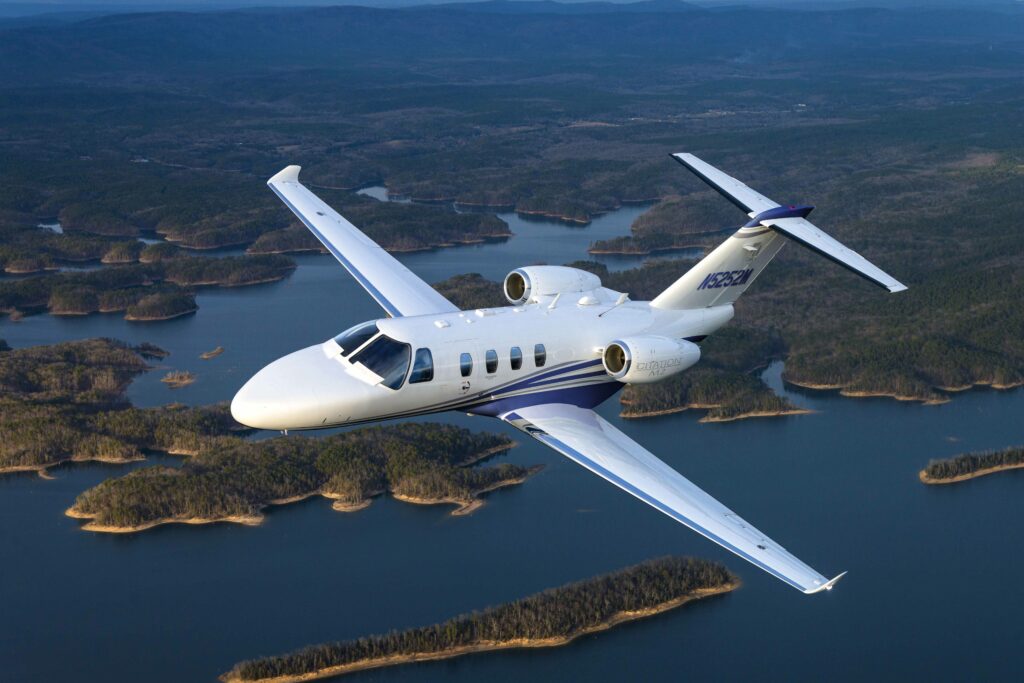
Furthermore, he said the M2 Gen2 “is an exceptional platform for customers who want to step into jet ownership. Historically, more than one-third of M2 customers moved to this model from a smaller turbine or piston aircraft.”
O’Bannion also noted that new buyers are seeking out the popular model. “At this time, we are seeing approximately 30 percent of M2 Gen2 customers are first-time aircraft owners.”
For customers who are not familiar with aircraft operations, but wish to enjoy the flexibility, productivity, and reliability associated with private jet ownership, Textron Aviation has its “ProOwnership” aircraft management portfolio. It provides customized trip planning, maintenance oversight, and personal pilots to enhance the owner’s experience of aircraft ownership.
When Skies asked if many M2 owners fly the aircraft themselves, he said, “Nearly 87 percent of M2 customers fly their own aircraft. It’s designed for single-pilot operation and includes the speed, control, range, and comfort pilots want in a light jet.”
Final Words
Skies received positive feedback from almost all of these eight OEMs regarding demand for their turbine powered, pressurized aircraft offerings in the $2 million to $6 million range. It provided proof that they have been doing the right thing by continuously upgrading their products.

Given the strong order activity associated with most of the models discussed, the outlook is bright for these light turbine types.

